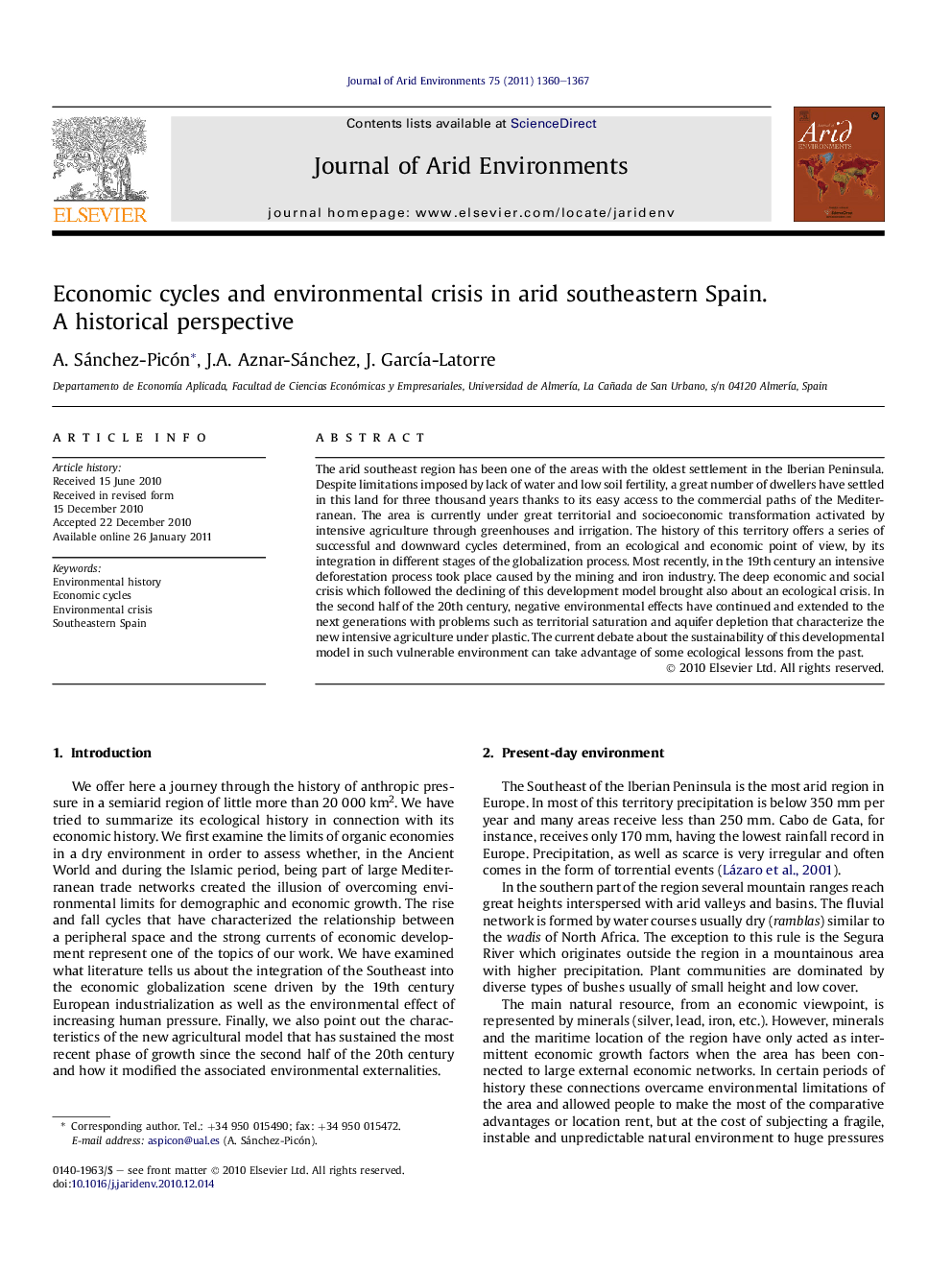| Article ID | Journal | Published Year | Pages | File Type |
|---|---|---|---|---|
| 4393431 | Journal of Arid Environments | 2011 | 8 Pages |
The arid southeast region has been one of the areas with the oldest settlement in the Iberian Peninsula. Despite limitations imposed by lack of water and low soil fertility, a great number of dwellers have settled in this land for three thousand years thanks to its easy access to the commercial paths of the Mediterranean. The area is currently under great territorial and socioeconomic transformation activated by intensive agriculture through greenhouses and irrigation. The history of this territory offers a series of successful and downward cycles determined, from an ecological and economic point of view, by its integration in different stages of the globalization process. Most recently, in the 19th century an intensive deforestation process took place caused by the mining and iron industry. The deep economic and social crisis which followed the declining of this development model brought also about an ecological crisis. In the second half of the 20th century, negative environmental effects have continued and extended to the next generations with problems such as territorial saturation and aquifer depletion that characterize the new intensive agriculture under plastic. The current debate about the sustainability of this developmental model in such vulnerable environment can take advantage of some ecological lessons from the past.
► Ecologic history of the Spanish Southeast related to its economic history. ► Environmental impacts due to the integration of the Spanish Southeast into the international economic networks. ► Environmental limits of the territory, comparative and location advantages. ► Lessons about the sustainability of development models in vulnerable environments.
